The area in questions spreads around the Hátmashatárhegy Airport. It runs around a small mound known as Vörös-kővár and is dwarfed by the hills that stand hundreds of meters above the area. It is a training ground for paragliding, and youths often gather here. They have little idea of the treasures hidden in their local environment.
The Caspian whipsnake is one of Hungary's highly protected species. This small mound houses one of its largest populations in the country, which has been fragmented and damaged by human activity. Fortunately, the area was declared a natural conservation area in 1978, and is part of the Buda Landscape Protection Area, and has thus not been built up. It is rare for an area to have been protected for so long, sadly this was rarely the case before the fall of socialism.
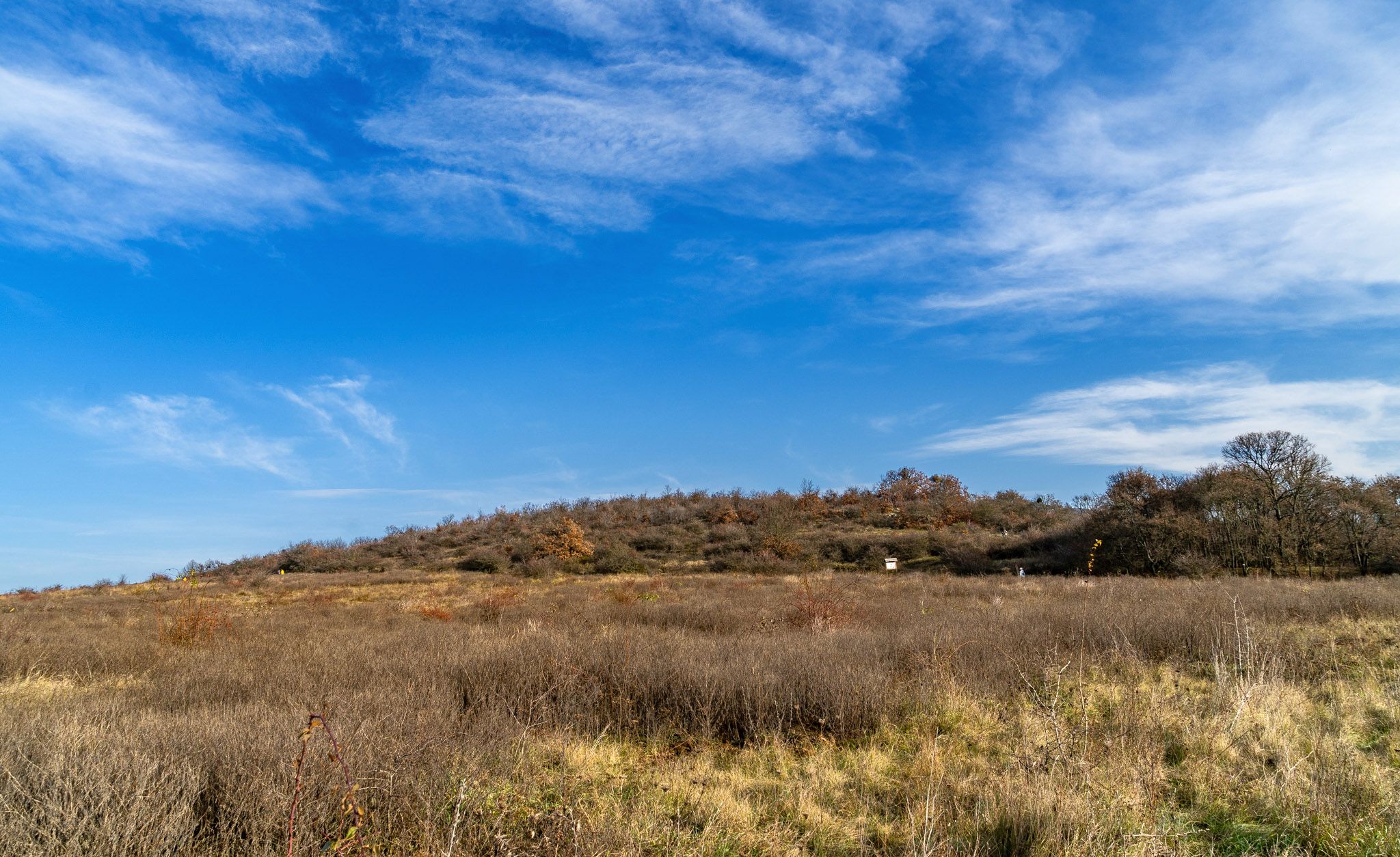
The trail starts from the meadow that surrounds the highest point of Vörös-Kővár (Photo: Balázs Both/Pestbuda.hu)
Leading up to the creation of the trail, the Hungarian Ornithological Society and the Danube Ipoly National Park launched a campaign to protect the snakes' natural habitat. In 2016, 5 reptiles were equipped with radio transmitters, and one of these was released by Goodall herself, during a visit in 2016. One whipsnake was named Jane, another Vali based on Jane Goodall's two given names.
Contrary to its name, the Hungarian Ornithological Society emphasises the protection of reptiles as well. The Jane Goodall trail was created in the cooperation of the Society, the Duna-Ipoly National Park, the 2nd District Local Council, the Hungarian National Asset Management company and the Hungarian Jane Goodall Institute, and inspired by Goodall's visit to Hungary in 2016. Donations from local entrepreneurs and residents funded much of the construction.
The Trail was finally completed in 2018 and opened by Jane Goodall, who visited Hungary again, who released one of the whipsnakes herself, in a flurry of media attention. The contents of the trail are also provided in English, on the reverse of the educational boards, allowing visitors who do not speak Hungarian to visit the path as well. It also provides an excellent opportunity for those learning English to develop their vocabulary.
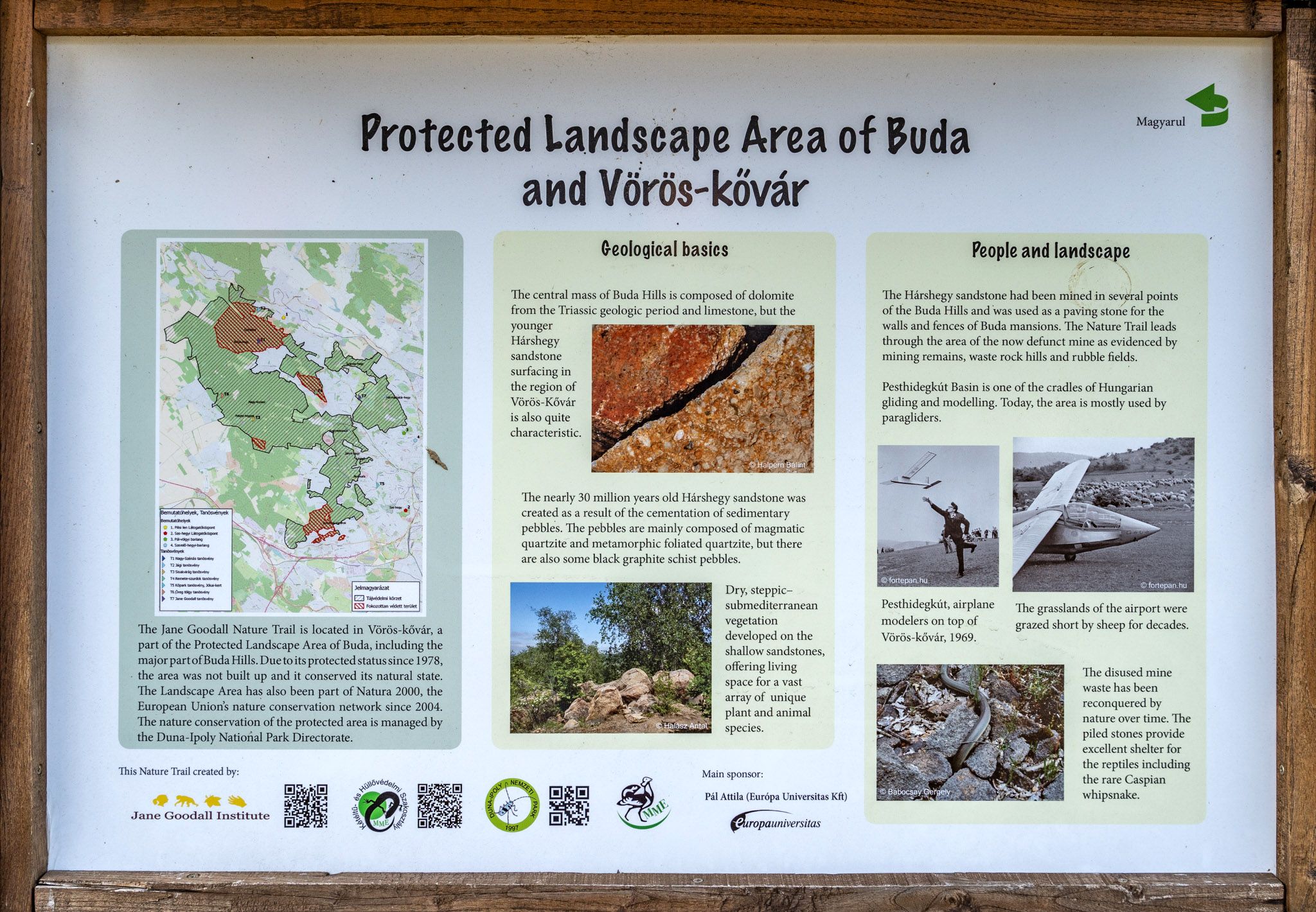
The informative materials are available in English (Photo: Balázs Both/Pestbuda.hu)
The nature trail consists of 6 educational boards and is about 800 metres long. It starts from a small car park on the corner of Kővári Road and Arad Street. The trail begins with plant associations common on meadows, but the terrain gradually becomes rockier and is dotted with oaks and wild roses.
Since the trail's creation, activists have cleaned the area several times, and civilians have organised ragweed removal actions with the local council.
The vörös ('red') in the mound's name comes from the Hárshegy sandstone formation which breaks through the surface on the mound and rests on the Triassic dolomite characteristic of the Buda Mountains. The stone was formed through the compression of sedimentary pebbles.
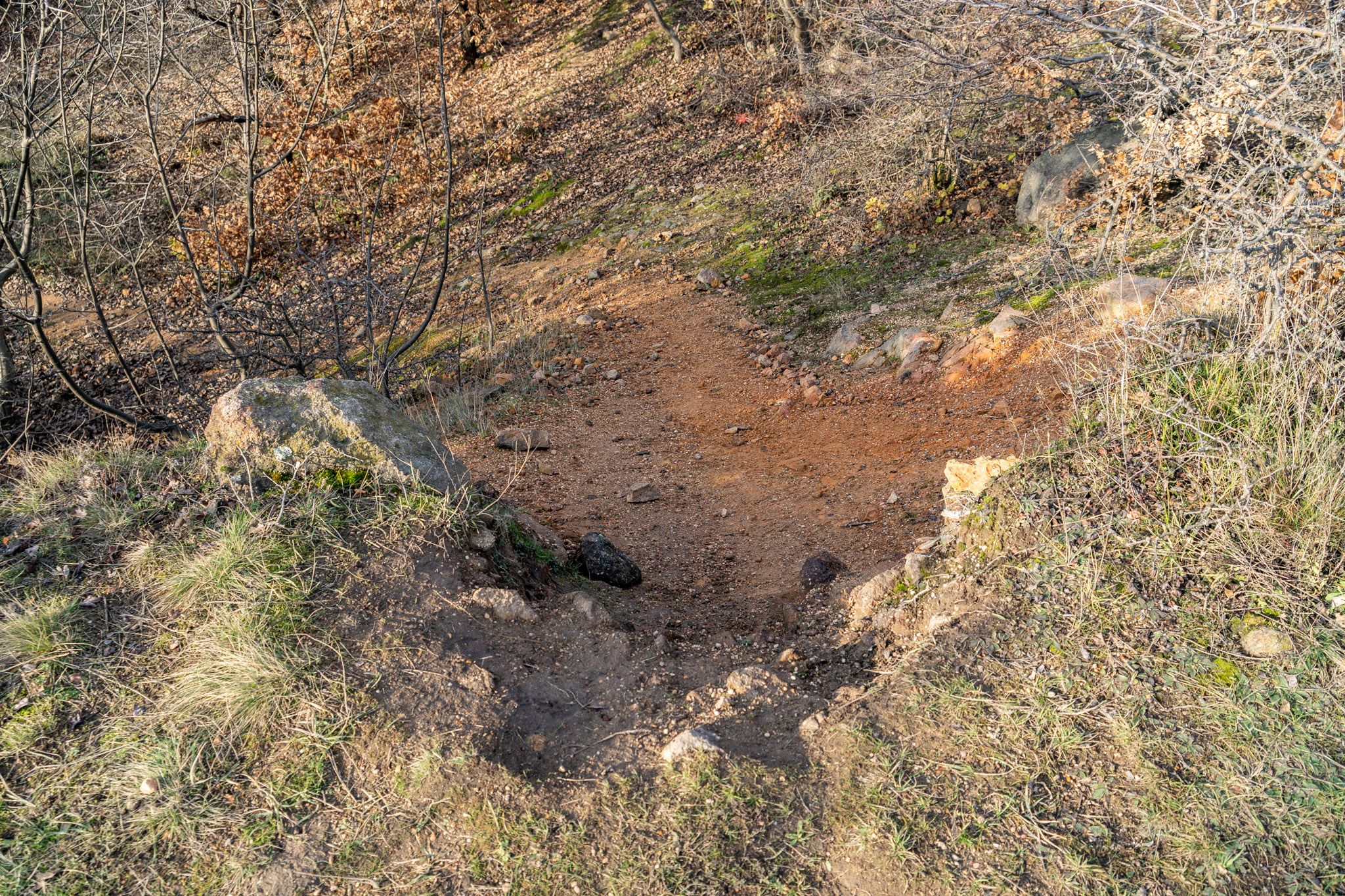
Red dominates the surface (Photo: Balázs Both/Pestbuda.hu)
The main attraction of the area is the mentioned Caspian whipsnake. The snake is known to be quick to bite, hence the word haragos ('furious') in its Hungarian name. While the snake is not venomous and is generally harmless to humans, its bite is rather unpleasant. The Caspian whipsnake is the largest snake that occurs naturally in Hungary. Its length can, in rare cases reach two meters. Its colour does not differ significantly from other whipsnake species found in Hungary. Its brownish colour is decorated with a white throat, a greyish neck, a colour which also appears on its side. One of its unique characteristics is the orange tint that appears towards the middle of its scales, making it seem as if the snake was striped. Their head is darker, browner, pupils are round, and their underbelly appears almost yellowish. The snake is a predator and eats rodents smaller than it, but it can even attack smooth snakes.
It can also catch green lizards, which are one of the main attractions of Sas Hill. It is also known to prey on the gophers that live around Vörös-kővár. The species prefers grassy meadows, which have rocks exposed to sunlight. The short-toed snake eagle is one of its also rare predators.
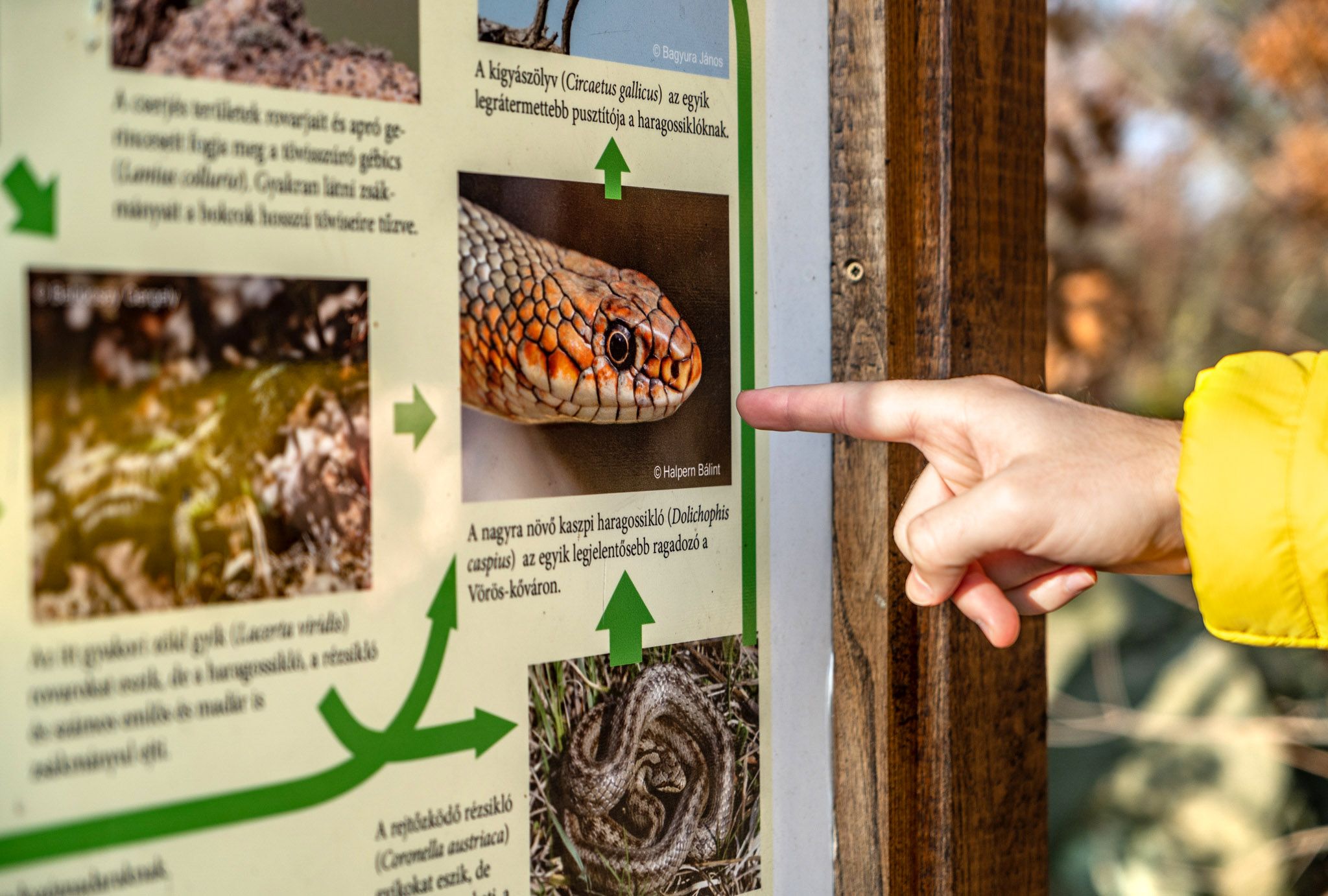
Even a picture shows that these snakes are unwelcoming to close interaction (Photo: Balázs/Pestbuda.hu)
Alongside the Caspian whipsnake, gophers and green lizards, appear in significant populations in the area. Anchusa ochroleuca is a rare plant of note often found in the region.
The view from Vörös-kővár is also stunning: the hills surrounding Pesthidegkut are visible in every direction, alongside well-known peaks such as Hármashatár Hill, Újlaki Hill, Csúcs Hill, Tök Hill, Kerek Hill, Nagy-Hárs Hill, Kis-Hárs Hill. The sunset over Nagyszénás and the twin towers of the Károly Kaán lookout and the Erzsébet lookout are especially stunning.
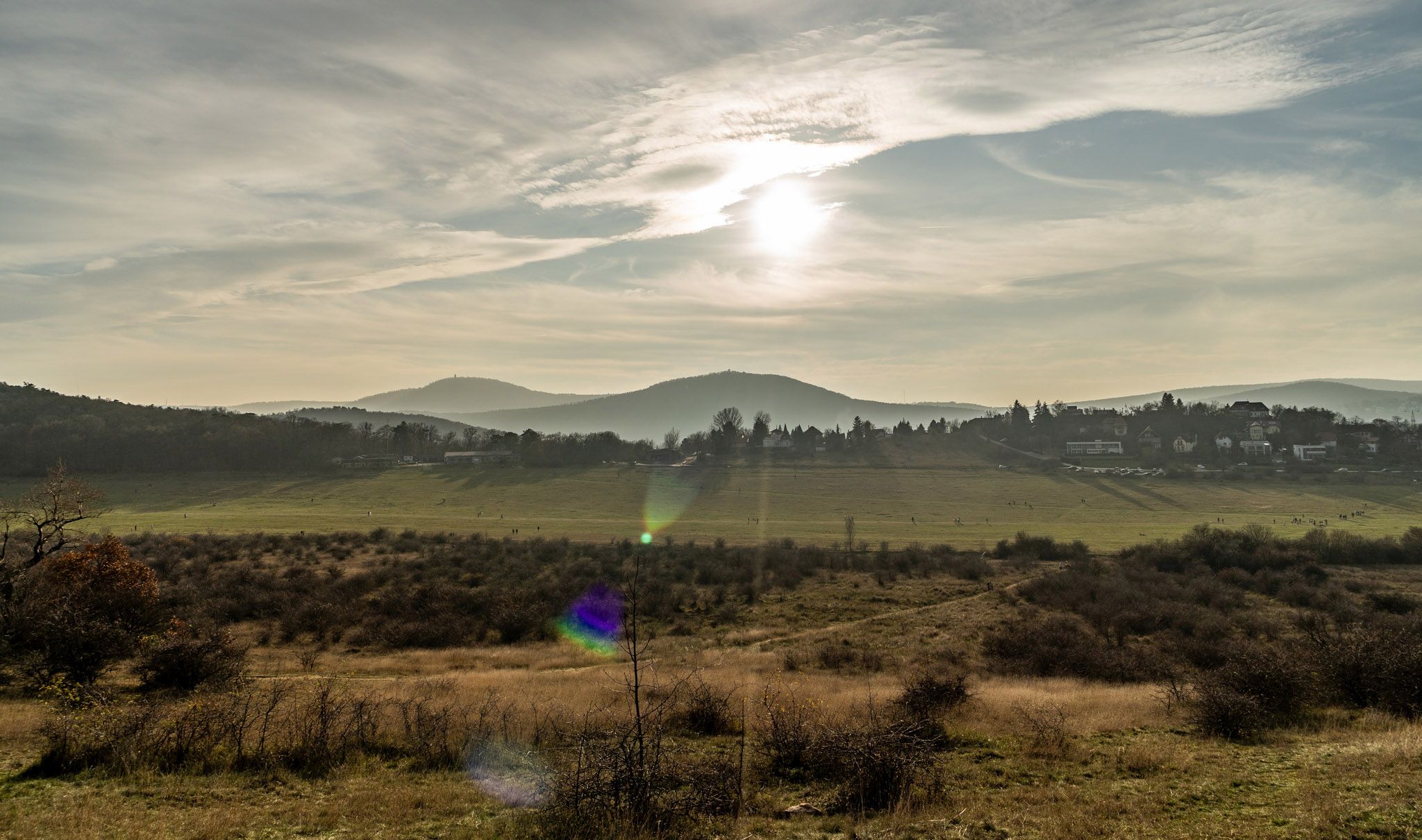
The two popular lookouts, the Károly Kaán lookout tower and the Erzsébet lookout tower are visible (Photo: Balázs Both/Pestbuda.hu)
Those looking to enjoy the spring sun can visit to admire the first runs of paragliders and admire the horses in the nearby stables.
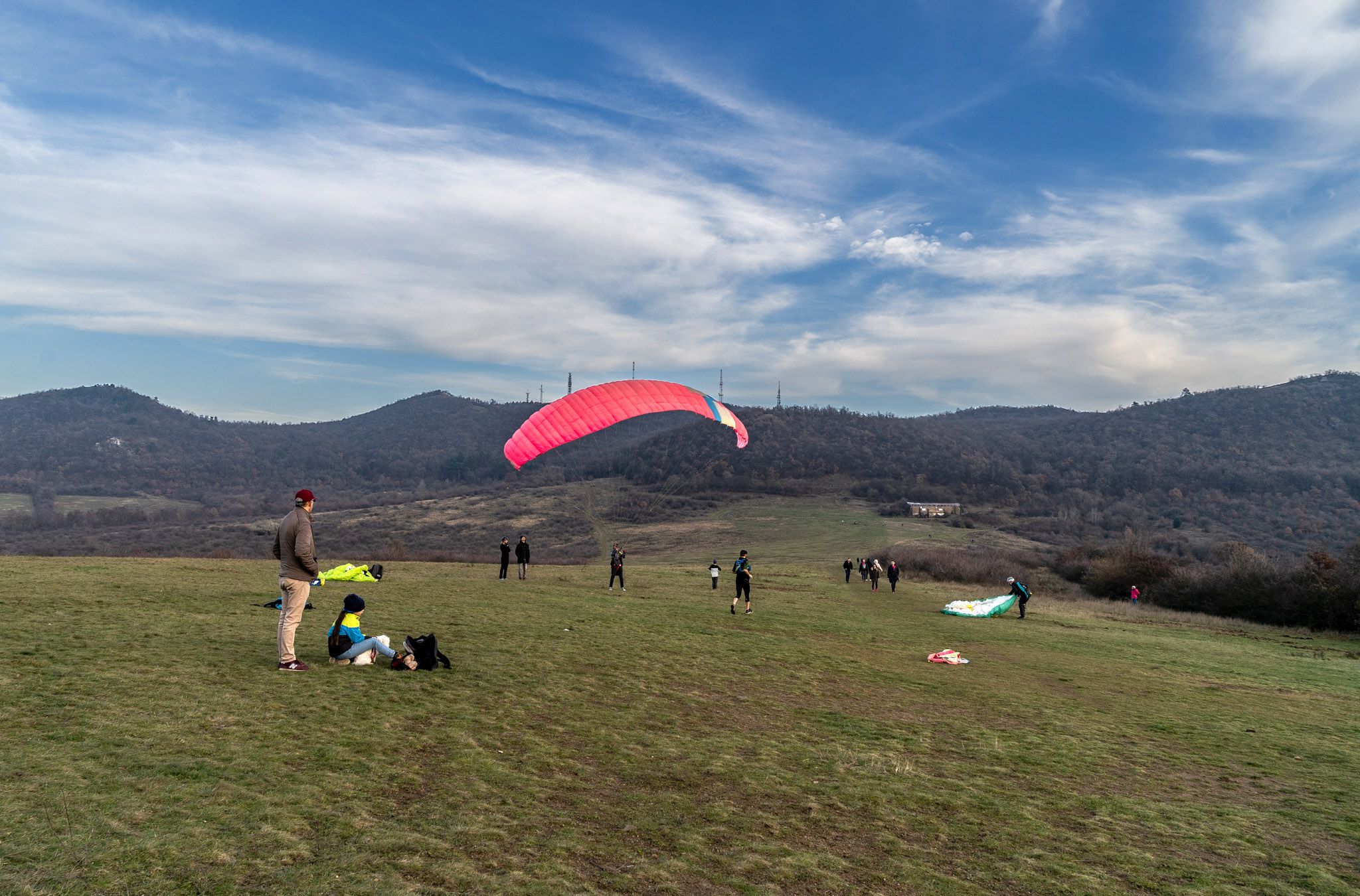
Paragliders practising (Photo: Balázs Both/Pestbuda.hu)
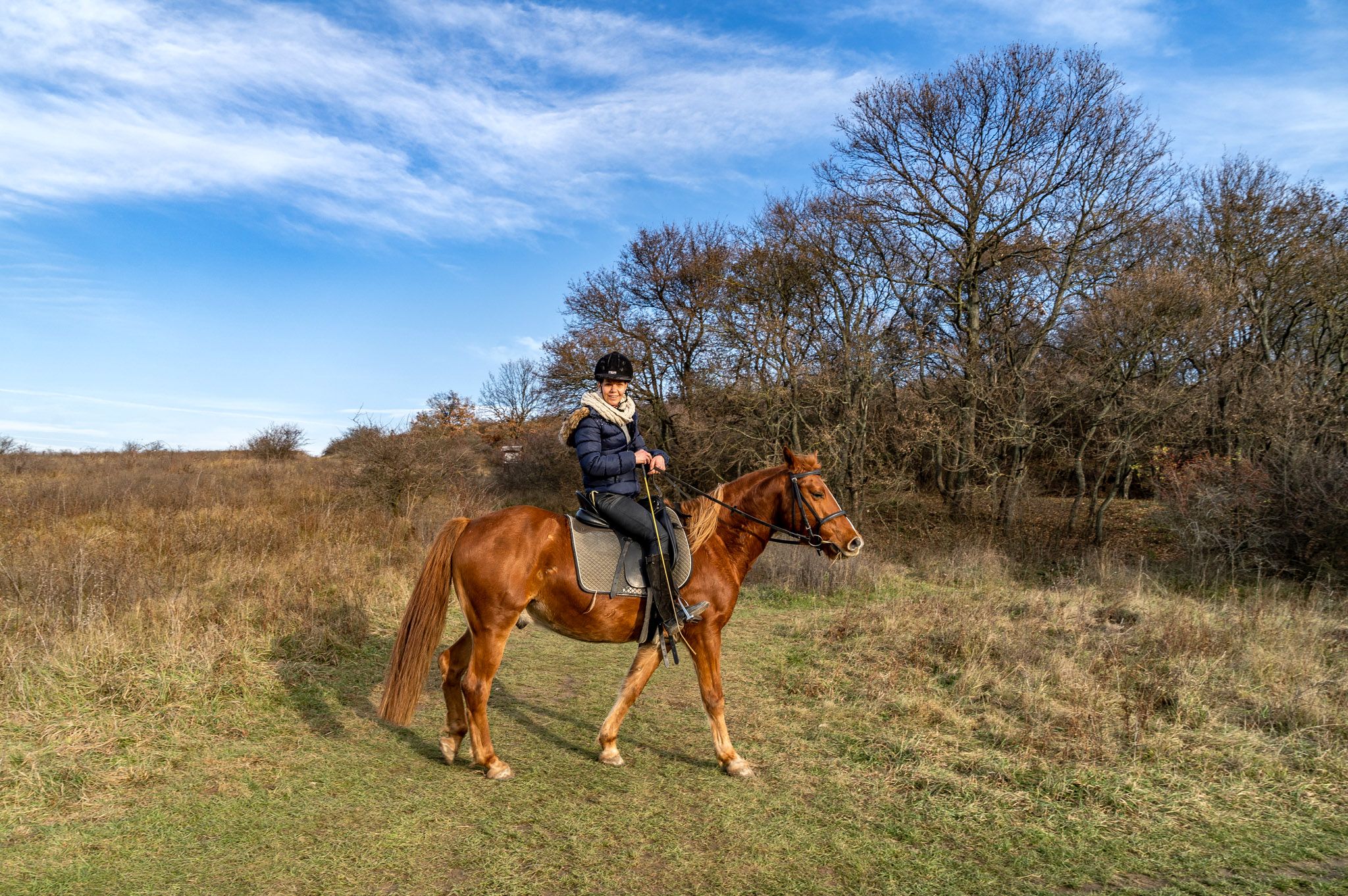
The horses enjoy these surroundings (Photo: Balázs Both/Pestbuda.hu)
Source: Hungarian Ornithological Society, Duna-Ipoly National Park, Jane Goodall Institute
Cover photo: The board designating the mound a landscape protection area (Photo: Balázs Both/Pestbuda.hu)

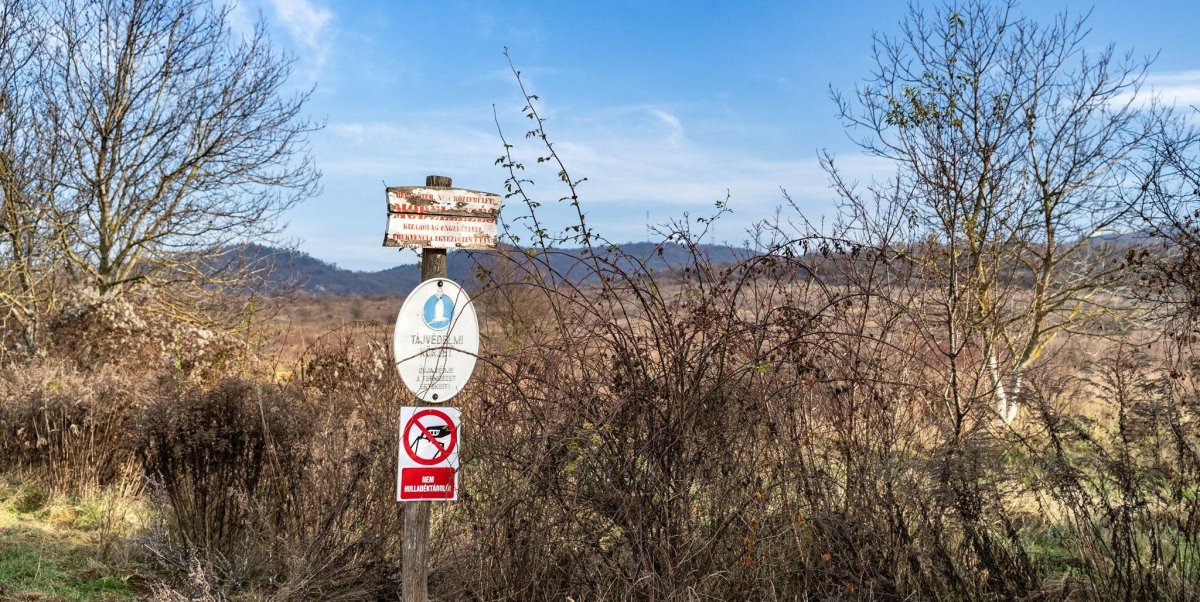





































Hozzászólások
Log in or register to comment!
Login Registration